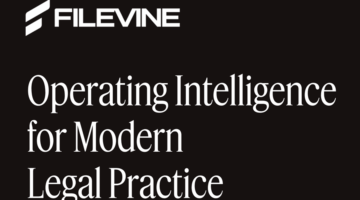
(Photo by Gilbert Carrasquillo/Getty Images)
A film about one of the most harrowing moments in rock history is now set to see the light of day. The Second Circuit Court of Appeals is to credit or blame, depending on your allegiances, as it recently overturned a Southern District of New York decision enjoining the film’s release. Titled “Street Survivors: The True Story of the Lynyrd Skynyrd Plane Crash,” it details the October 20, 1977, Mississippi airplane clash in which Lynyrd Skynyrd founder Ronnie Van Zant and others perished. Miraculously, Gary R. Rossington and Allen Collins, the two other band founders, and Artimus Pyle, the drummer who had joined the band a couple of years before the crash, survived.
The Street Survivors film is now free as a bird and will be released for public consumption shortly. Produced by Cleopatra Records with the assistance of Pyle, who received a producer/consultant credit and a cut of the take, the film hit a major roadblock on the way to release when word of its subject matter reached the other surviving members and family members of the deceased in 2016.

How Legisway Helps In-House Teams Manage All Legal Matters In One Trusted Place
Operate with AI driven insights, legal intake, unified content and modular scalability to transform efficiency and clarity.
The impediment was that, in short, the release of the film would run afoul of a formal iteration of a “blood oath” taken by Rossington, Collins, and Van Zant’s widow, Judith, to “never to use the name Lynyrd Skynyrd again.” The original blood oath held for 10 years, but, after a dispute arose in 1987 in regard to the use of the name in connection with a tribute tour, the parties converted the “blood oath” into something more formal and legalistic, viz., a consent order.
This consent order precluded all parties to it, including Pyle, who was omitted from the “blood oath” for reasons lost to time, from exploiting the good Lynyrd Skynyrd name and story beyond the delineated parameters of the compact. And its meaning and enforceability were at the heart of Ronnie Van Zant, Inc. v. Cleopatra Records, Inc., the case in which the injunction against the film’s release was granted.
The Second Circuit, reviewing the injunction on appeal, found that the key provision of the consent order was section 3, which noted that “Each of the Individual Defendants … shall have the right to exploit his … own respective life story in any manner or medium, including … [a] motion picture[ ] …. In such connection, each of the foregoing shall have the right to refer to ‘Lynyrd Skynyrd’ and related matters and to describe and portray his experience(s) with ‘Lynyrd Skynyrd;’ provided that no such exploitation of life story rights is authorized which purports to be a history of the ‘Lynyrd Skynyrd’ band, as opposed to the life story of the applicable individual.”
The case, then, turned on whether Street Survivors was a depiction of Pyle’s life story, which, natch, included his experiences in Lynyrd Skynyrd, and which would have been appropriate given the contours of section 3, or, rather, a history of the band as a whole, which was verboten by that same section.

How Filevine’s New DraftAI Cuts Out Hours Of Writing Work
Now it transforms your document creation with natural language prompts.
In reaching its decision in what may seem like a tie-goes-to-the-runner type situation, the Second Circuit relied heavily on its own precedent as well as that of the Supreme Court to counsel that injunctions such as the one applied to Street Survivors must “be specific and definite enough to apprise those within its scope of the conduct that is being proscribed[,]” and that “basic fairness requires that those enjoined receive explicit notice of precisely what conduct is outlawed.”
The plane crash is the focal point of the film and it is hard to argue that the crash was not a critical moment in Pyle’s life. But, at the same time, it was an important part of the band’s history. This friction was found by the Second Circuit to be sufficient to scuttle the district court’s order, as, given the injunction tenets noted above, the terms of the consent order were “sufficiently inconsistent, or at least insufficiently specific, to support an injunction.” So, tie goes to the filmmaker and drummer here.
In a concurrence, Circuit Judges Jon O. Newman and Peter W. Hall note that they closely read the script in order to offer a more quantitative analysis. Only six pages of the script, they assert, focus on just the band, while 102 pages focus on Pyle, “including his hiring by the band, his interactions with his wife, his actions in the plane just prior to the crash, the crash, his escape from the crashed plane, his being shot, his hospital treatment, his return to the crash scene, his playing with his own band, and finally his voiceover at the graveyard.” This, they conclude, makes clear that the film fits square within the confines of section 3 of the consent order.
The full panel also opines that the issues presented do not ensnare the First Amendment, as it was a private party agreement and not a governmental act or defamatory statement that was under review. The court, after eschewing First Amendment concerns, did clarify that “even though the injunction here has allegedly been imposed as a result of private contract rather than government censorship, it nonetheless restrains the viewing of an expressive work prior to its public availability, and courts should always be hesitant to approve such an injunction.”
This idea guides court analysis in most so-called “life story” cases, which arise most often in the copyright, right of publicity, or defamation context (recall Olivia de Havilland’s recent, unsuccessful suit challenging her depiction in the FX docudrama “Feud: Bette and Joan,” which was crushed by the First Amendment), and this decision informs us that contracting around the right to tell a person’s story is a very difficult task for the drafter.
 Scott Alan Burroughs, Esq. practices with Doniger / Burroughs, an art law firm based in Venice, California. He represents artists and content creators of all stripes and writes and speaks regularly on copyright issues. He can be reached at [email protected], and you can follow his law firm on Instagram: @veniceartlaw.
Scott Alan Burroughs, Esq. practices with Doniger / Burroughs, an art law firm based in Venice, California. He represents artists and content creators of all stripes and writes and speaks regularly on copyright issues. He can be reached at [email protected], and you can follow his law firm on Instagram: @veniceartlaw.